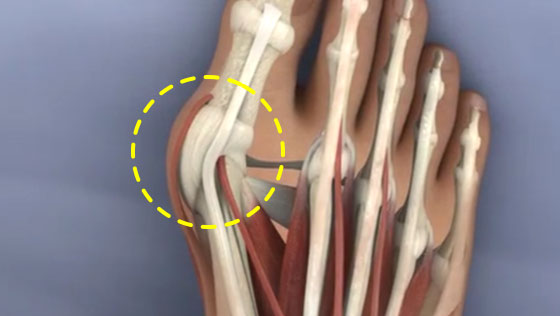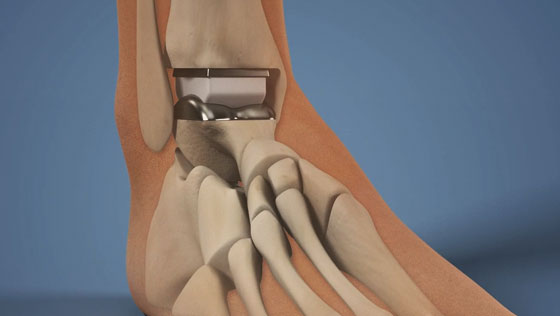What is Diagnostic Ankle Arthroscopy?
Diagnostic ankle arthroscopy is a minimally-invasive surgical procedure performed to identify and treat disease or damage inside the ankle joint. A camera attached to an instrument called an arthroscope is utilized during the procedure.
Key statistics about Diagnostic Ankle Arthroscopy
- Foot and ankle injuries account for 40% of all injuries in athletes[1]
- In the United States, 20,000 injuries to ligaments of the ankle are seen each day[1]
- There is a 9% complication rate with ankle arthroscopy[2]
Expert Insights
Ankle Arthroscopy Explained - J. Carr Vineyard, MD
Ankle Anatomy
The ankle is a complex joint formed by three bones: the tibia, the fibula, and the talus.
Articular cartilage covers the ends of the bones, helping to absorb shock and allowing the bones to glide smoothly against one another.

Why is Diagnostic Ankle Arthroscopy performed?
Ankle arthroscopy is performed primarily to identify and relieve ankle pain associated with damage to cartilage, bone or soft tissue of the ankle. Problems may include:
- Arthritis
- Fractures
- Torn ligaments

Who needs Diagnostic Ankle Arthroscopy?
Individuals who have sustained an injury or degenerative condition of the ankle that has not responded to nonsurgical treatment may undergo diagnostic ankle arthroscopy.
How is Diagnostic Ankle Arthroscopy performed?
- The surgeon will make small incisions around the ankle joint and the arthroscope will be inserted into one of the incisions.
- Saline solution is pumped into the joint to expand it and improve visualization.
- Images from the arthroscope are sent to a video monitor where the surgeon can see inside the joint.
- Using the video monitor as a guide, the surgeon will locate the problem area and make a diagnosis.
- Finally, the saline solution is drained, instruments are removed, and the incisions are closed using sutures.
What are the risks of Diagnostic Ankle Arthroscopy?
It is uncommon to experience complications from diagnostic ankle arthroscopy but potential risks may include:
- Infection
- Blood clots
- Tissue damage
- Damage to nerves or blood vessels
How long does it take to recover from Diagnostic Ankle Arthroscopy?
-
24 hours after surgery
Most patients are able to return home the same day as their procedure. Pain medication and blood thinners may be prescribed. -
1-3 days after surgery
The patient may be asked to wear a brace or use crutches in the days following the procedure. -
2 weeks after surgery
Any non-dissolvable sutures are removed and bruising and swelling begin to subside.
What are the results of Diagnostic Ankle Arthroscopy?
Diagnostic ankle arthroscopy is a minimally-invasive procedure that typically has a faster recovery time and fewer complications than open ankle surgery. Ultimately, the results of diagnostic ankle arthroscopy depend upon the specific diagnosis and treatment.
Find an Orthopedic Doctor in Your Area




